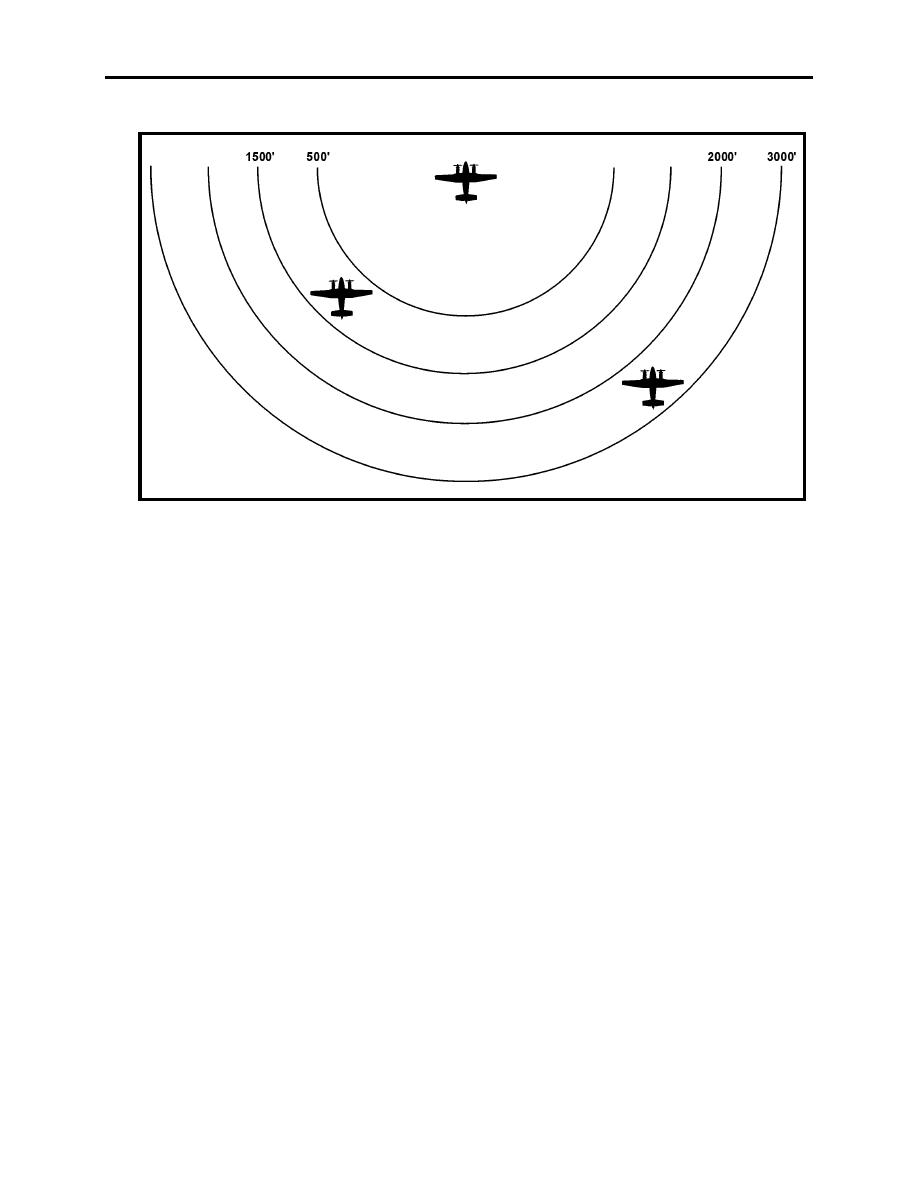 |
|||
|
Page Title:
Figure 2-4 Fluid Trail Formation Position |
|
||
| ||||||||||
|
|  LOW-LEVEL AND TACTICAL FORMATION
CHAPTER TWO
Figure 2-4 Fluid Trail Formation Position
Several potentially hazardous positions exist in which WING could position themselves. Two of
these will be discussed to illustrate how WING must anticipate LEAD's actions.
1.
One position is directly abeam LEAD (similar to Line Abreast, which is discussed below).
If LEAD begins a turn towards WING, a conflict exists. There are several things WING could
do. The first is to simply turn away from LEAD; however, WING would first lose sight of
LEAD and then actually pass LEAD. This is not a good option. The second is for WING to turn
towards LEAD aiming to pass behind LEAD. This works as long as WING is not directly
abeam. The third is for WING to initiate a turn towards LEAD while climbing to pass above
LEAD. Once LEAD safely passes, quickly reverse the turn and descend to avoid being thrown
out of the cone.
2.
Inadvertent IMC presents another hazard since wingmen are not in a set position and
therefore no set procedures can be established. If IMC is encountered, LEAD and WING must
quickly communicate and decide the safest method to separate the flight. LEAD must be
directive to prevent a serious situation from developing. For example, if both WING aircraft
have maneuvered to the same side as LEAD, it would be appropriate for LEAD to direct TWO to
fly straight, while LEAD and THREE fly 45 away from TWO for 2 minutes. It is imperative
that all aircraft quickly communicate to ensure separation.
Fluid trail is usually prebriefed to begin at a point prior to entering a threat environment. It ends
at the IP since WING must be back in the in-trail position for the run-in and drop.
It minimizes the amount of time a formation is exposed to sight since all three aircraft cross a
TACTICAL FORMATION
2-13
|
|
Privacy Statement - Press Release - Copyright Information. - Contact Us |